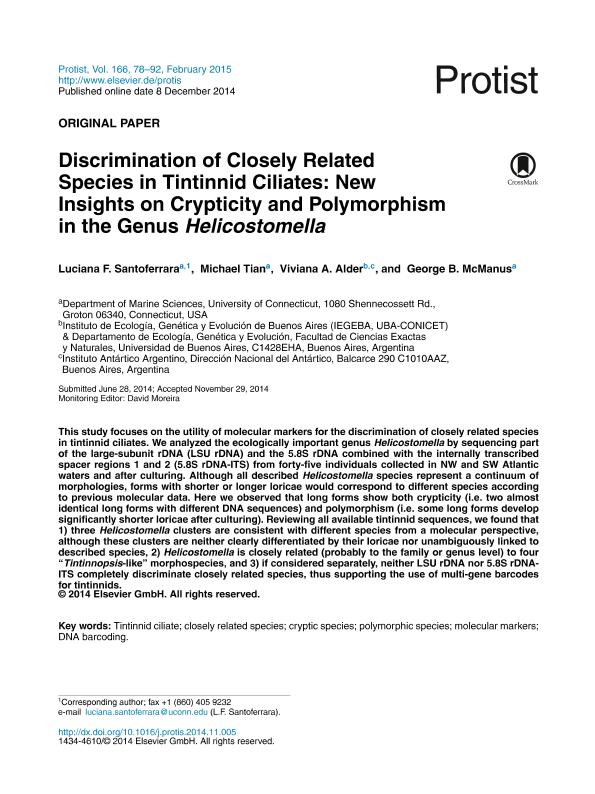Artículo
Discrimination of closely related species in tintinnid ciliates: New insights on crypticity and polymorphism in the genus helicostomella
Fecha de publicación:
02/2015
Editorial:
Elsevier Gmbh
Revista:
Protist
ISSN:
1434-4610
Idioma:
Inglés
Tipo de recurso:
Artículo publicado
Clasificación temática:
Resumen
This study focuses on the utility of molecular markers for the discrimination of closely related species in tintinnid ciliates. We analyzed the ecologically important genus Helicostomella by sequencing part of the large-subunit rDNA (LSU rDNA) and the 5.8S rDNA combined with the internally transcribed spacer regions 1 and 2 (5.8S rDNA-ITS) from forty-five individuals collected in NW and SW Atlantic waters and after culturing. Although all described Helicostomella species represent a continuum of morphologies, forms with shorter or longer loricae would correspond to different species according to previous molecular data. Here we observed that long forms show both crypticity (i.e. two almost identical long forms with different DNA sequences) and polymorphism (i.e. some long forms develop significantly shorter loricae after culturing). Reviewing all available tintinnid sequences, we found that 1) three Helicostomella clusters are consistent with different species from a molecular perspective, although these clusters are neither clearly differentiated by their loricae nor unambiguously linked to described species, 2) Helicostomella is closely related (probably to the family or genus level) to four ". Tintinnopsis-like" morphospecies, and 3) if considered separately, neither LSU rDNA nor 5.8S rDNA-ITS completely discriminate closely related species, thus supporting the use of multi-gene barcodes for tintinnids.
Archivos asociados
Licencia
Identificadores
Colecciones
Articulos(IEGEBA)
Articulos de INSTITUTO DE ECOLOGIA, GENETICA Y EVOLUCION DE BS. AS
Articulos de INSTITUTO DE ECOLOGIA, GENETICA Y EVOLUCION DE BS. AS
Citación
Santoferrara, Luciana Fernanda; Tian, Michael; Alder, Viviana Andrea; McManus, George B.; Discrimination of closely related species in tintinnid ciliates: New insights on crypticity and polymorphism in the genus helicostomella; Elsevier Gmbh; Protist; 166; 1; 2-2015; 78-92
Compartir
Altmétricas




